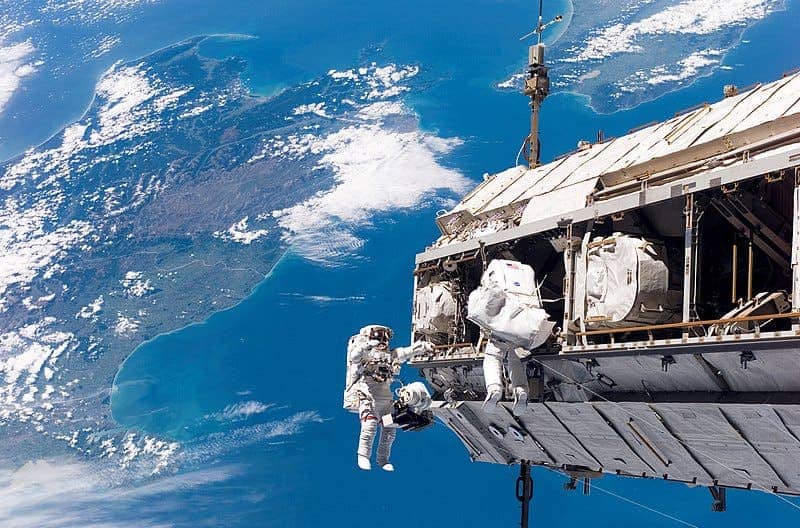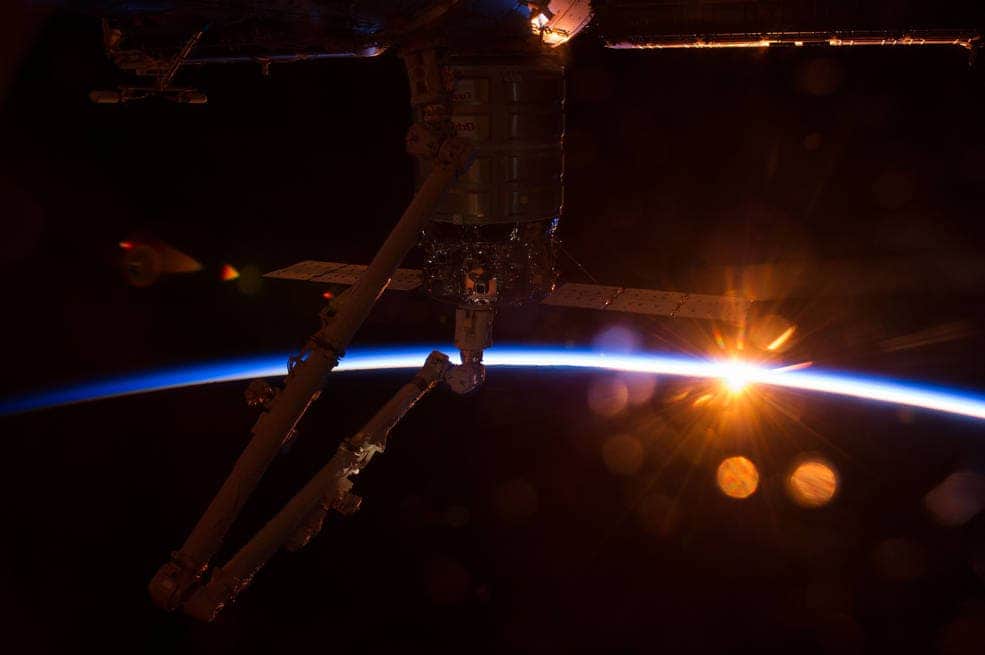The International Space Station (ISS) is one of the most complex structures ever developed by mankind. It’s the largest object we’ve ever sent to space and can often be seen from Earth with the naked eye. It also serves as a habitable satellite for astronauts and as a space lab to conduct numerous and varied experiments.
Now, NASA wants to open the ISS to the commercial sector.

“NASA is opening the International Space Station to commercial opportunities and marketing these opportunities as we’ve never done before,” said the agency’s chief financial officer, Jeff DeWit. “The commercialization of low Earth orbit will enable NASA to focus resources to land the first woman and next man on the moon by 2024, as the first phase in creating a sustainable lunar presence to prepare for future missions to Mars.”
It’s not exactly a new idea. When the proposal for the ISS was first floated around during the Reagan administration, the potential to draw in commercial funding was very appealing. A wide array of commercial activities were expected to bring in billions of dollars, although that hasn’t really happened.
NASA spends around $3-4 billion a year operating the station and shuttling people to and from the ISS — that’s close to 50% of the agency’s entire space flight mission. NASA also isn’t the sole operator of the ISS: it’s a collaboration between NASA and four other agencies: the European Space Agency, JAXA (Japan), Roscosmos (Russia), and CSA (Canada).
All participants have pledged to maintain the station until 2024, but it will almost certainly carry on for longer than that. Simply put, too much has already been invested to abandon the ISS. Gilles Leclerc, head of space exploration at the Canadian Space Agency, says there’s no way that can happen.
“It would be a waste. We cannot ditch the International Space Station. There’s just too much invested,” says Leclerc. “It’s quite clear, it’s unanimous between the partners that we continue to need a space station in low Earth orbit.”
The experiments carried out aboard have also proven invaluable, and the ongoing scientific research is constantly creating new knowledge — it’s not something that should be canceled. So instead, the agencies are looking for alternative options to attract funding. Already, more than 50 companies are already conducting commercial research, with promising results. NASA now wants to expand that, being open to discussing commercial partnerships with all entities that fulfill one of the following 3 conditions:
- require the unique microgravity environment to enable manufacturing, production or development of a commercial application;
- have a connection to NASA’s mission; or
- support the development of a sustainable low-Earth orbit economy.
NASA also is enabling private astronaut missions of up to 30 days on the International Space Station, with the first such mission being scheduled no later than 2020.

It seems like a great idea on paper. Bringing in private astronauts or allowing commercial enterprises to carry their own experiments could generate massive income for the ISS, allowing it to perform its activities as usual, or even expand. However, whether this interest exists and exactly how much money could be raised remain a matter of speculation. NASA themselves have stopped short of discussing actual figures.
At the same time, there is the concern that allowing commercial capital to flow in could delay scientific experiments, or even put them on hold. NASA would become just one of the many entities working on the ISS, and it’s unclear whether the agency would continue to have priority on all the equipment it wants.
In the meantime, the harsh environment of low-orbit space continues to take a toll on the ISS. The United States and Russia are legally responsible for all modules they have launched, but the bill to extend the operations of the ISS until 2030 initially failed in the US House, despite passing unanimously through the Senate (it was later approved, in December 2018).
What about after that? Even in 2030, it’s unlikely that the ISS will be decommissioned unless something unexpected happens, but in order to continue, the ISS must undergo serious maintenance work to ensure its safety. Some modules might be taken over by commercial activities but at the end of the day, it’s still the national governments who will have to rise up to the challenge. Hopefully, they will.


